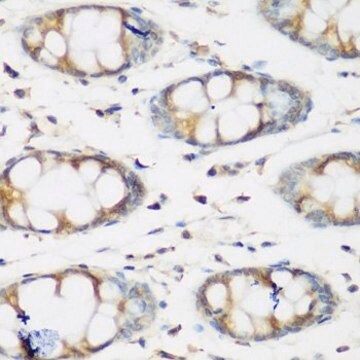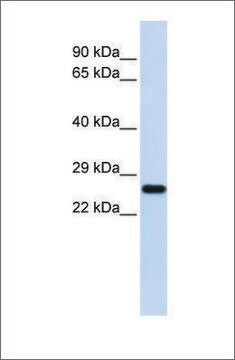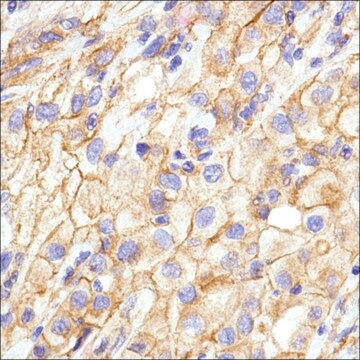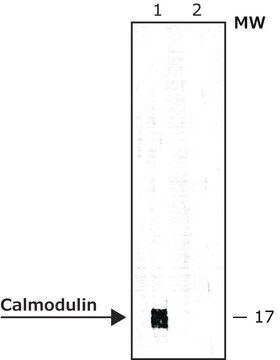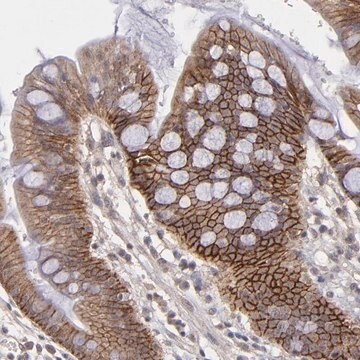MABC612
Anti-Procadherin FAT1 Antibody, clone C257
clone C257, from mouse
Synonym(s):
Cadherin family member 7, Cadherin-related tumor suppressor homolog, Protein fat homolog
About This Item
Recommended Products
biological source
mouse
Quality Level
antibody form
purified immunoglobulin
antibody product type
primary antibodies
clone
C257, monoclonal
species reactivity
human
technique(s)
immunoprecipitation (IP): suitable
western blot: suitable
isotype
IgG1κ
NCBI accession no.
UniProt accession no.
shipped in
wet ice
target post-translational modification
unmodified
Gene Information
human ... FAT1(2195)
General description
Immunogen
Application
Apoptosis & Cancer
Western Blotting Analysis: 1.0 µg/mL from a representative lot detected Procadherin FAT1 in 10 µg of FAT1 transfected MDA-MB-231 and MDA-MB-468 cell lysate.
Immunoprecipitation Analysis: A representative lot immunoprecipitated Procadherin FAT1 in C257 cell lysate. (Courtesy of Dr. R. Thorne, U of Newcastle, AU.)
Quality
Western Blotting Analysis: 1.0 µg/mL of this antibody detected Procadherin FAT1 in 10 µg of FAT1 transfected NIH-3T3 cell lysate.
Target description
Physical form
Storage and Stability
Other Notes
Disclaimer
Not finding the right product?
Try our Product Selector Tool.
Storage Class Code
12 - Non Combustible Liquids
WGK
WGK 1
Flash Point(F)
Not applicable
Flash Point(C)
Not applicable
Certificates of Analysis (COA)
Search for Certificates of Analysis (COA) by entering the products Lot/Batch Number. Lot and Batch Numbers can be found on a product’s label following the words ‘Lot’ or ‘Batch’.
Already Own This Product?
Find documentation for the products that you have recently purchased in the Document Library.
Our team of scientists has experience in all areas of research including Life Science, Material Science, Chemical Synthesis, Chromatography, Analytical and many others.
Contact Technical Service



